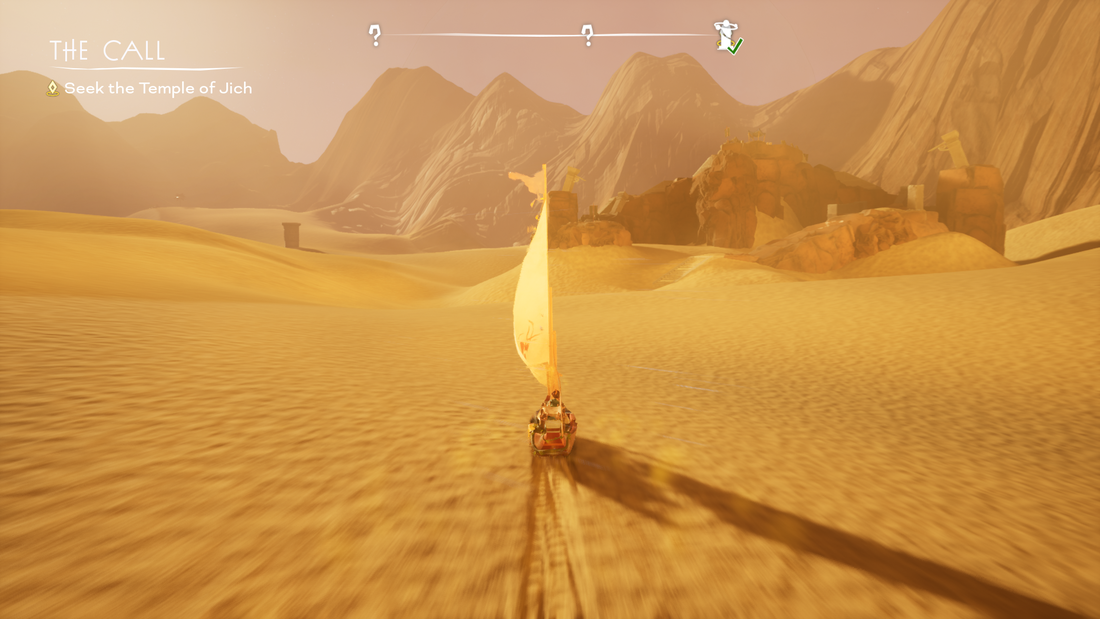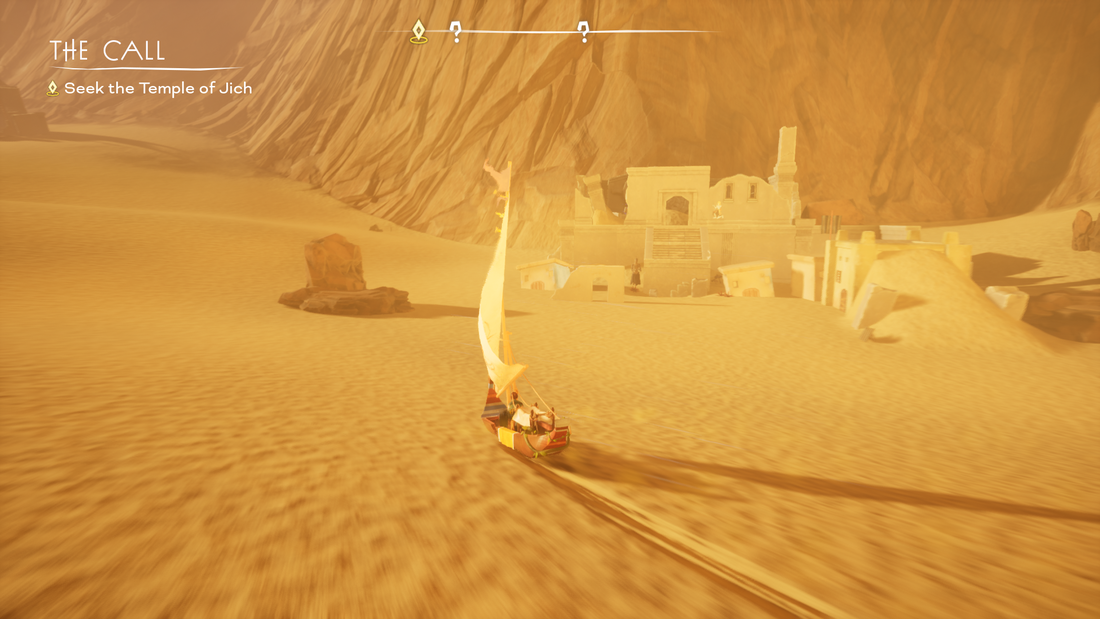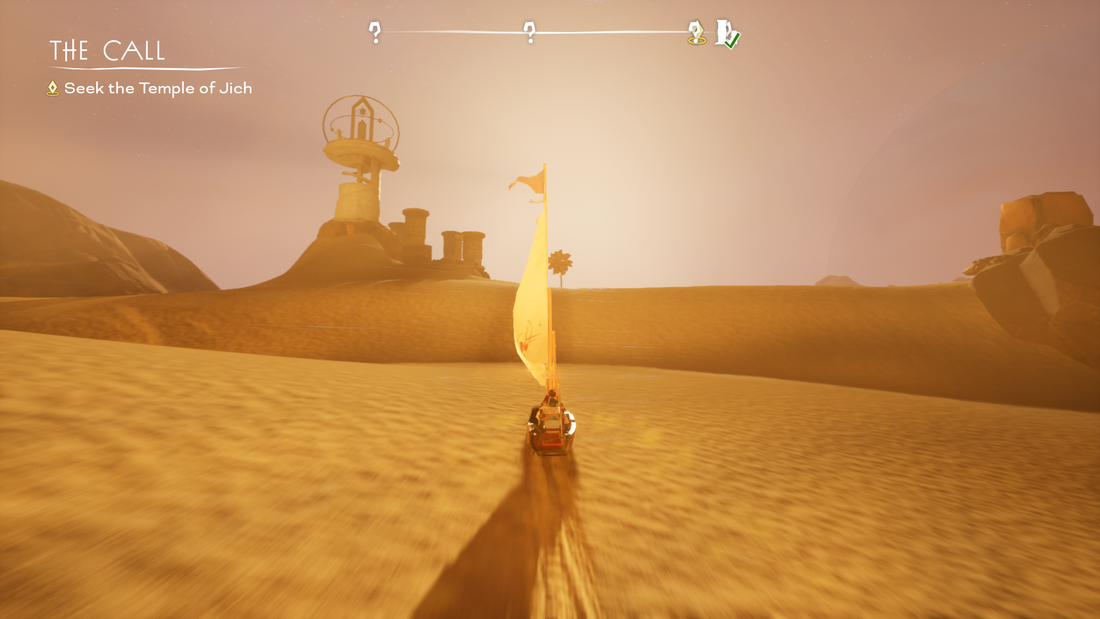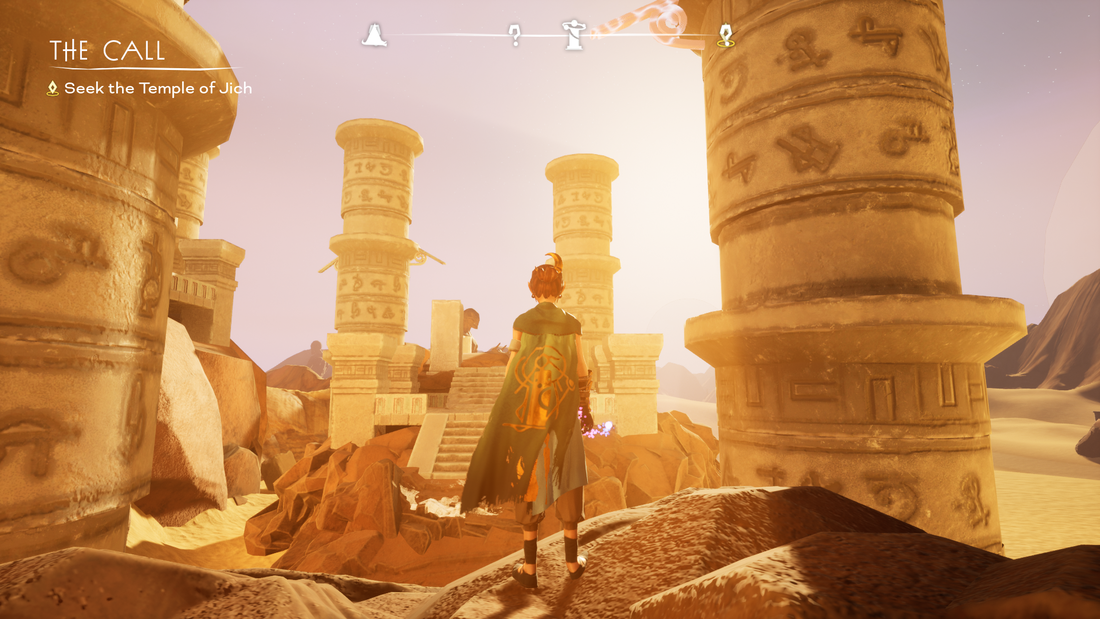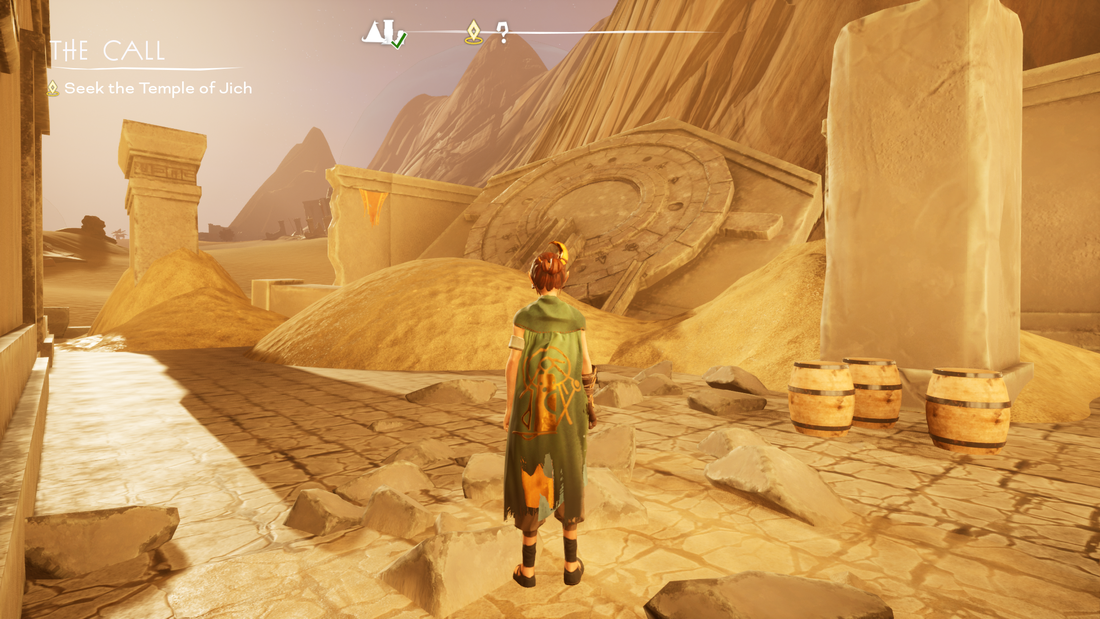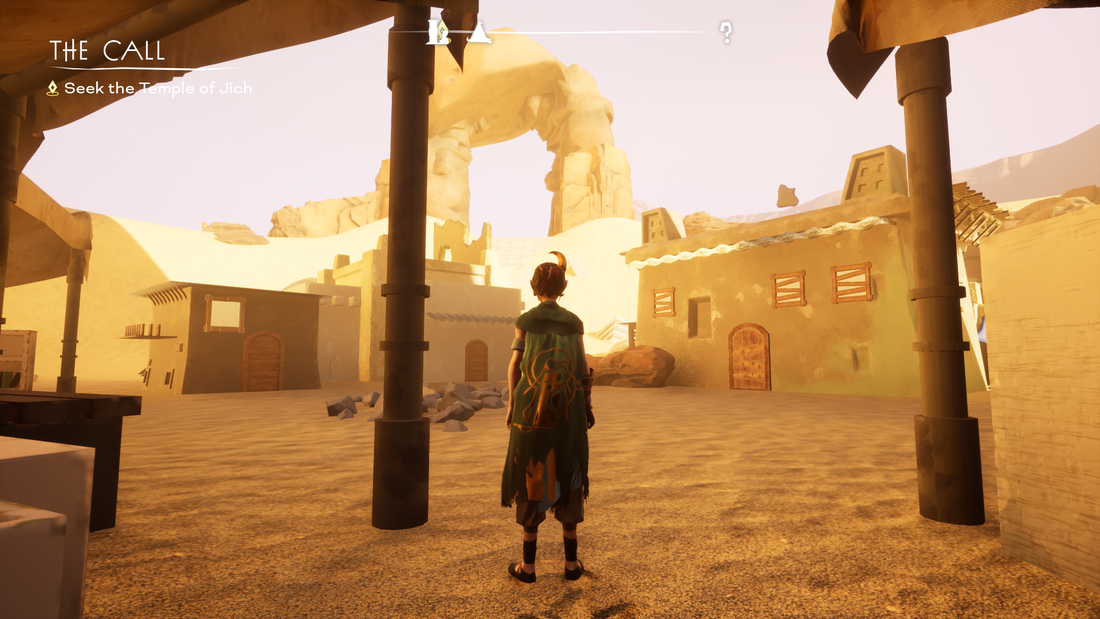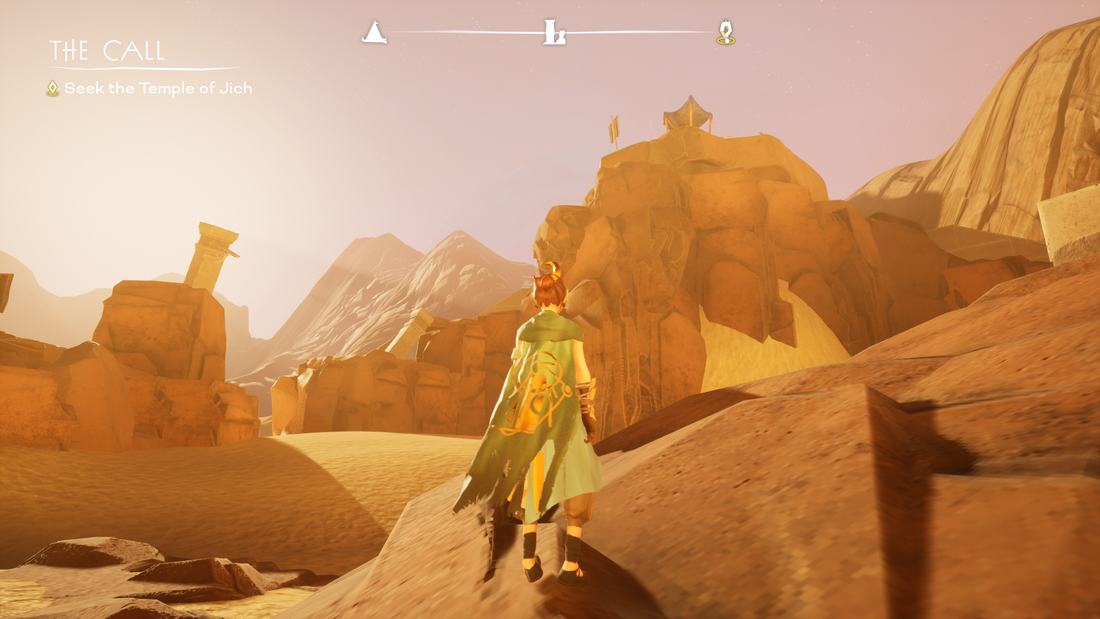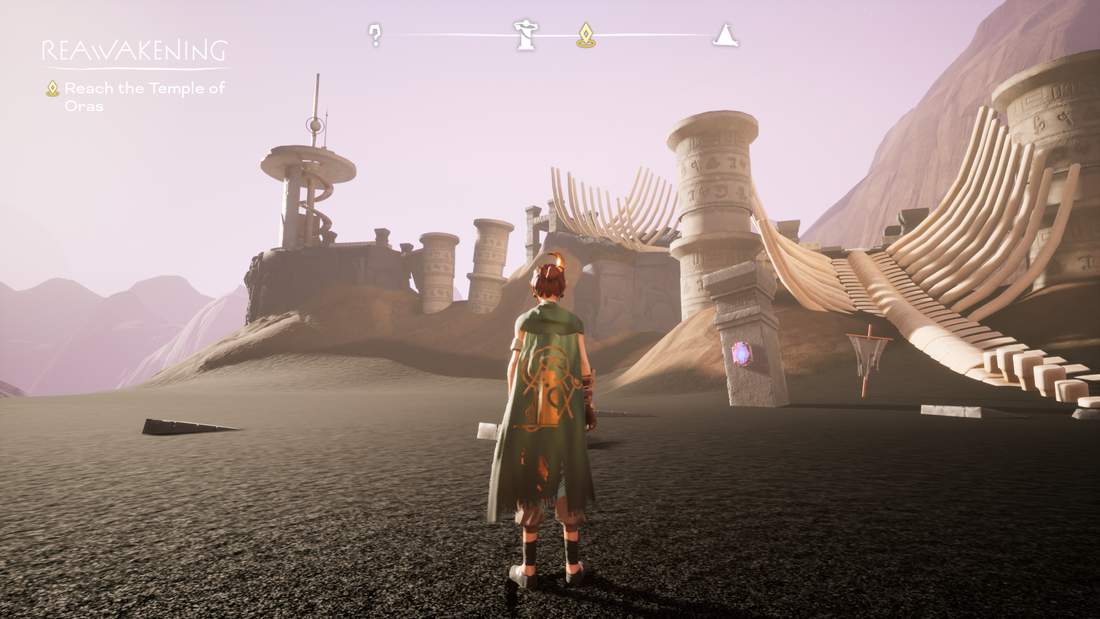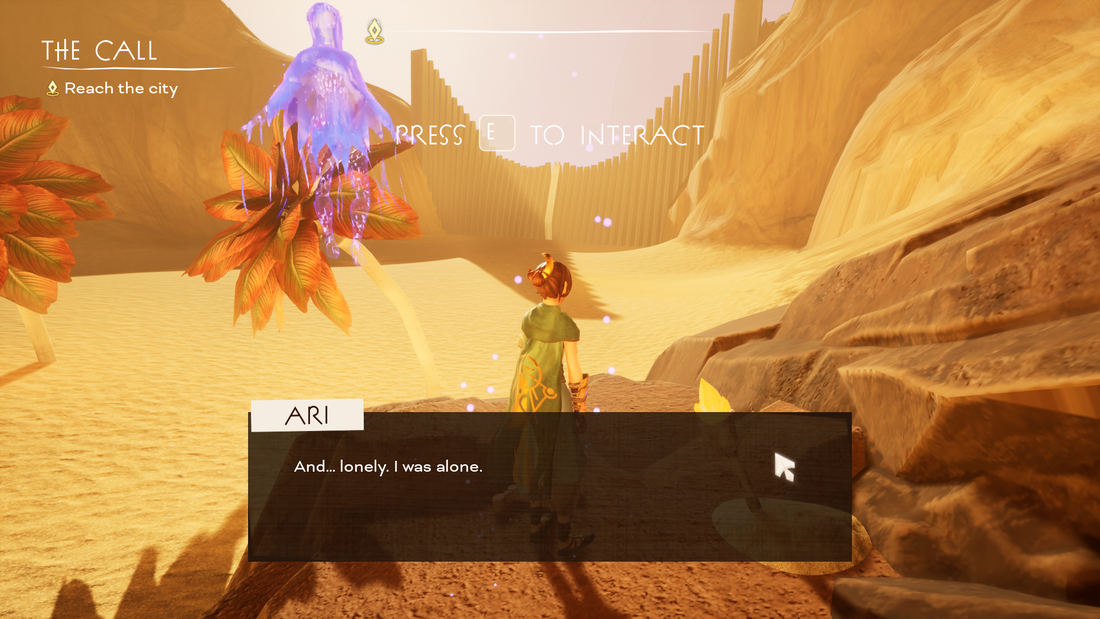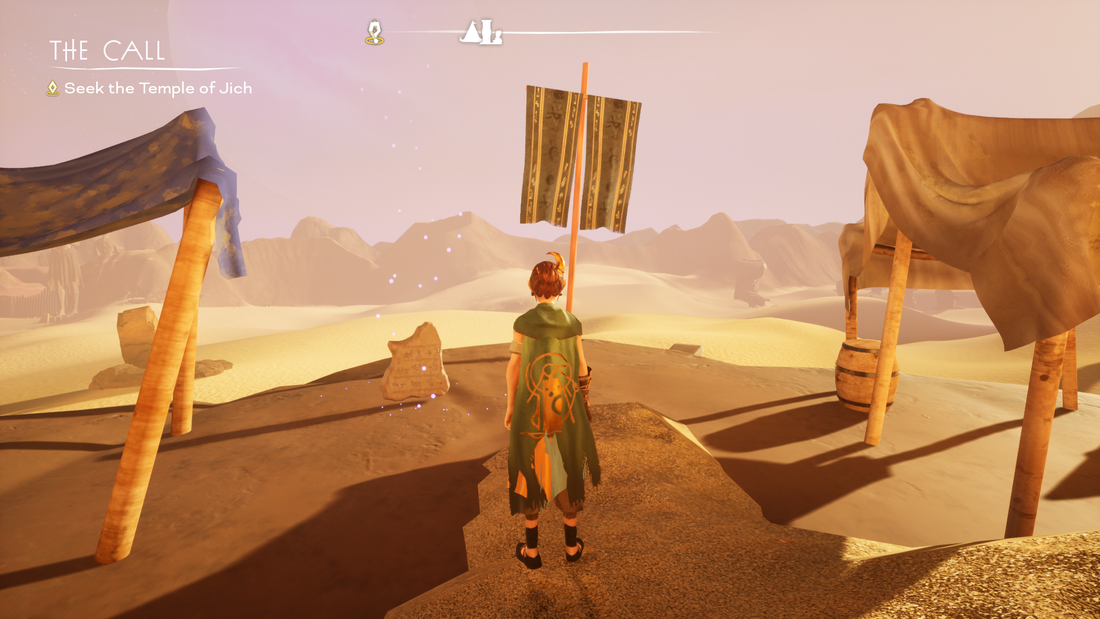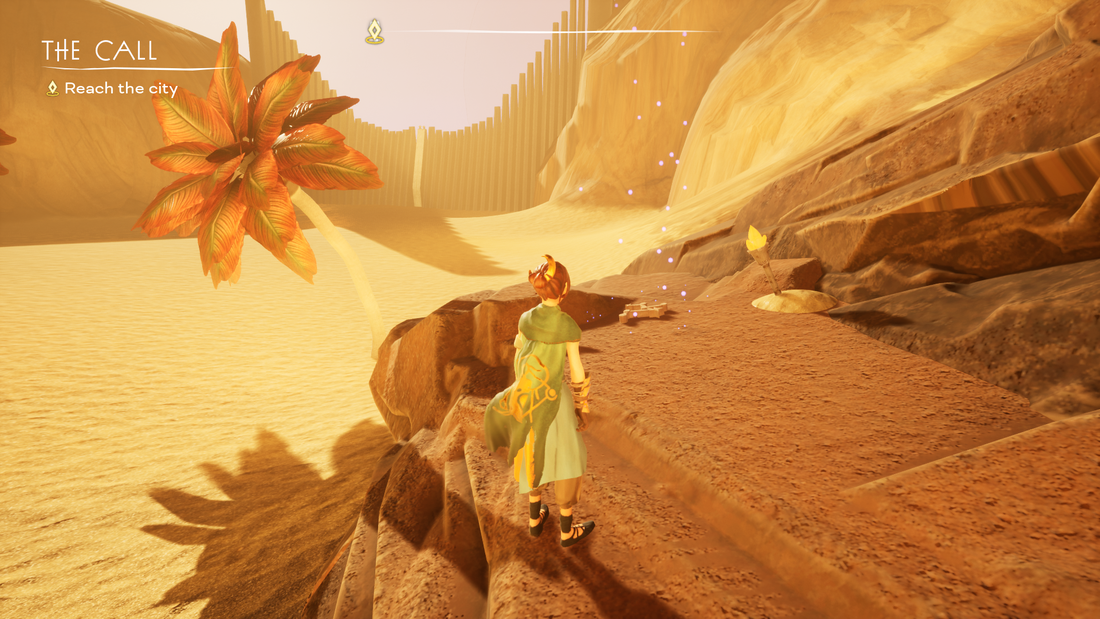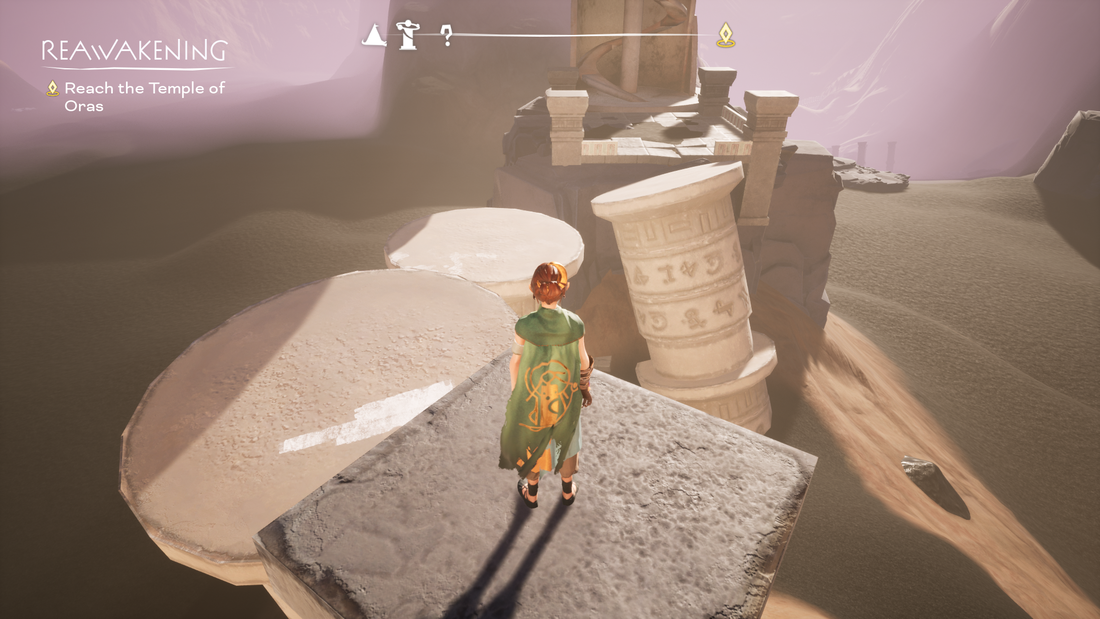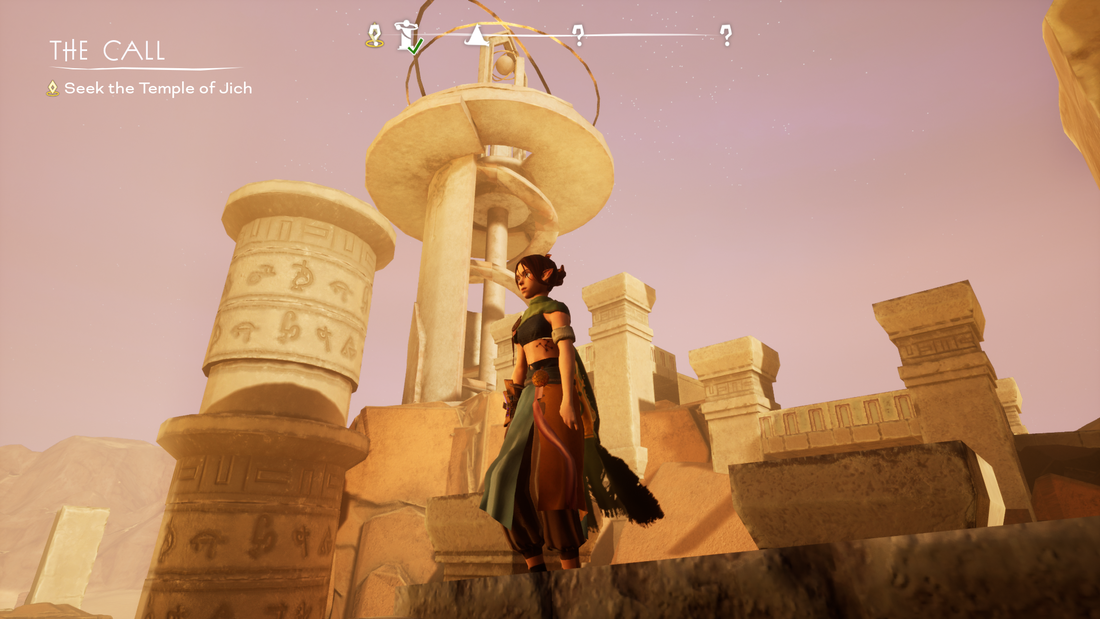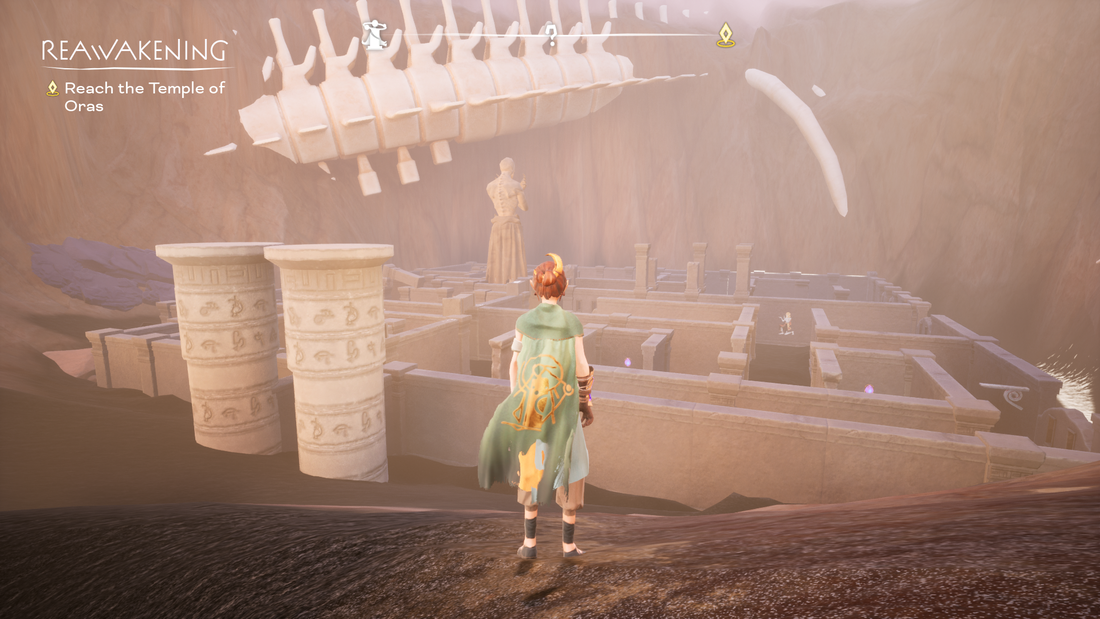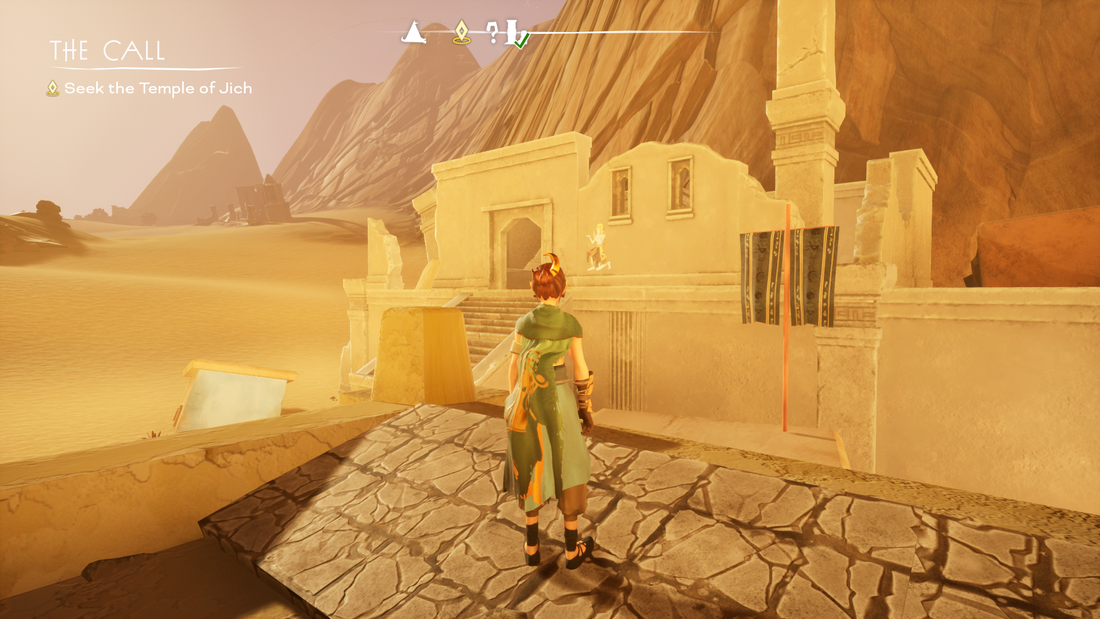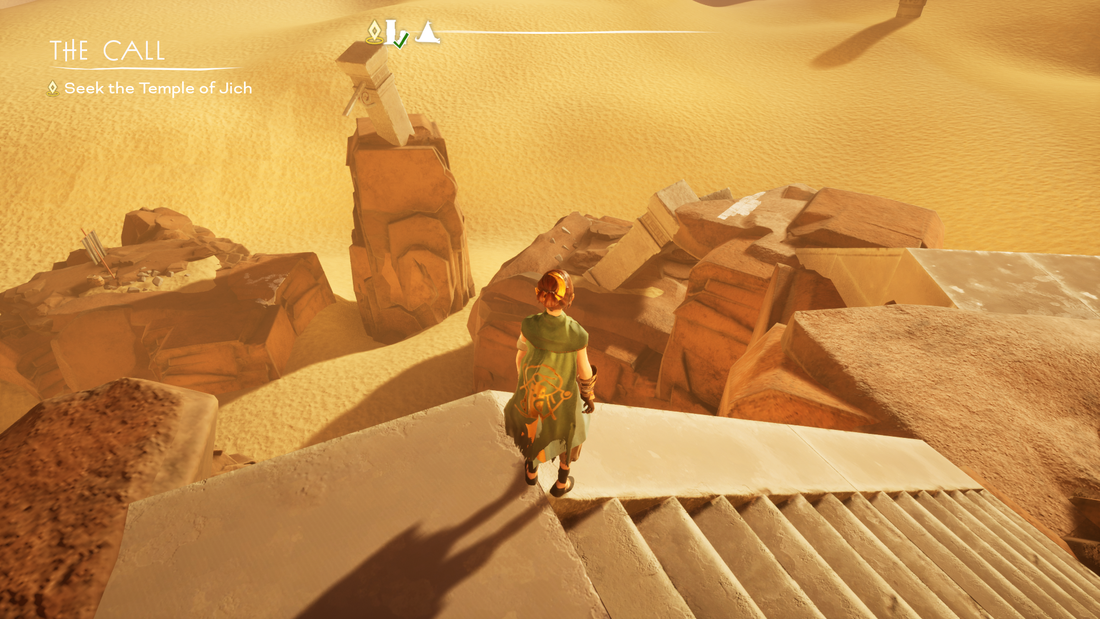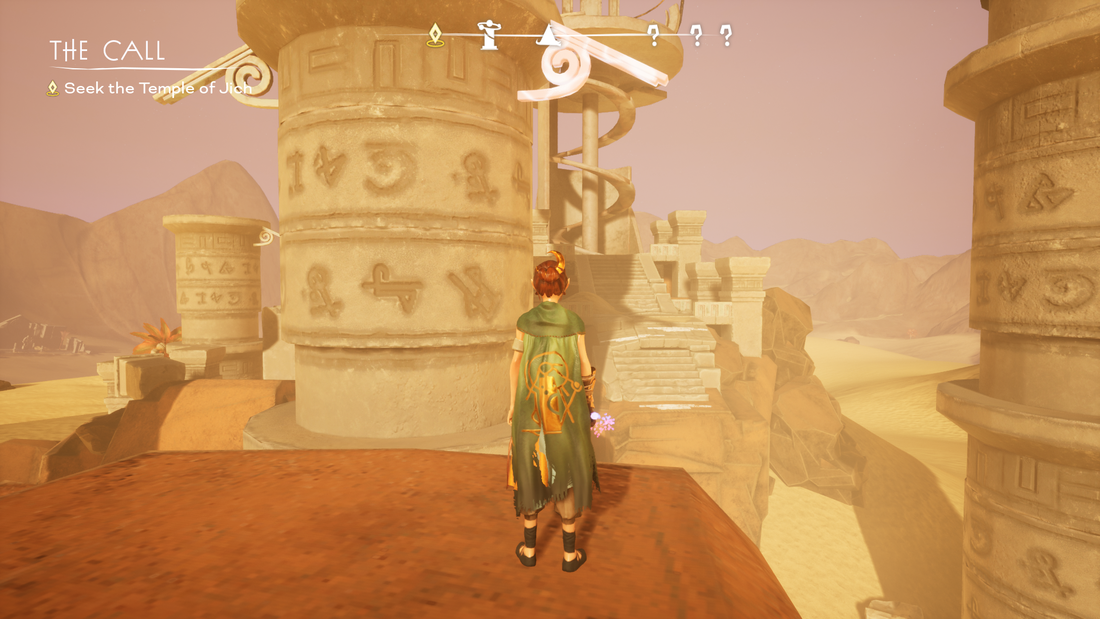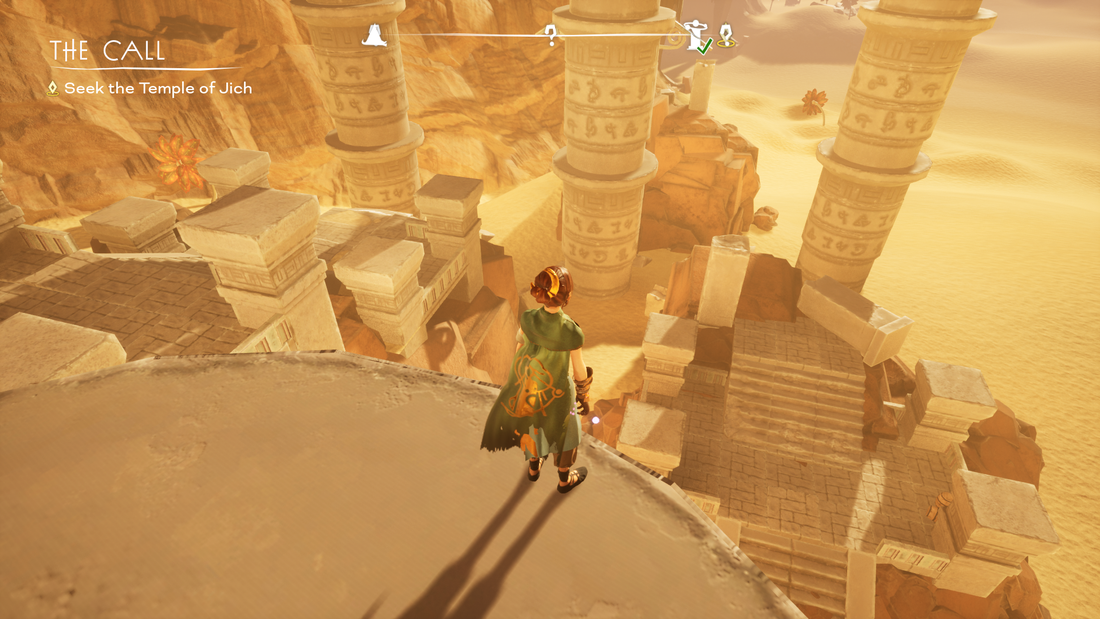Light of Alariya
|
Light of Alariya is a 3rd person adventure game where the player can explore a rich open-world with 3 unique desert biomes. The player can run, jump, climb, and swing while exploring long forgotten ruins, solving puzzles to restore their civilization, and collecting scraps of the past to piece together their people's history.
|
Engine: Unreal 5
Roles: Open World Designer / Narrative Designer Team Size: 30 Reported to: Lead Level Designer Platform: PC, Steam |
Roles/Responsibilities
Open World Designer:
As one of the Open World Designers, I was given the opportunity to fully design, implement, and iterate on the entirety of the Yellow Sands region (the beginning region). This included the actual shape of the landscape, the color, the placement of Points of Interest and collectables, and the Points of Interest themselves. It was a very rewarding job, being given such an important task of not only shaping the world and geography of the first area every player encounters, but also the layout and design of every Point of Interest within said area. Narrative Designer: In addition to being a Open World Designer, I was also a Narrative Designer for the game. I assisted in the initial drafting and structure of the main game/story and later transitioned into writing the text for the collectables. I loved being in this role. It allowed me to express my creativity and participate in shaping the lore and history of the world. It also gave me the opportunity to tell small stories using the found journal entries, being able to flesh out characters with only their journals was a very fun experience. |
Yellow Desert
|
I was tasked with designing and building the Yellow Sands area of the map.
This included: - Landscape manipulation - Landscape coloring - Prop/Ruin placement - Collectable placement - Points of Interest placement - Designing every Point of Interest within the Yellow Sands - Building every Point of Interest within the Yellow Sands |
Areas
|
Top Down Map
I was given complete control of where to place the POIs within the Yellow Area.
My logic for the placements was that:
At 1, the Forgotten Shrine, the player would learn about Points of Interest and the collectables within them. Being that this was also a fairly small and easy POI, this was a good introduction.
At 2, Topaz Observatory, the player would be able to climb up and orient themselves within the area. From here, they could find the other POIs and the Temple within the area. This POI introduces swinging as a means of platforming as well, so a nice step up.
At 3, Lover's Reach, the player's swinging skills would be tested. This POI has some precise swings to it, so it's a good challenge to the player.
At 4, this was more of a narrative decision to have the Village so far away. This was intended to remind the player that this was a decimated civilization. They will have spent a lot of time exploring at this point, and so it was important to (subtly) remind the player of their task and what's at stake.
My logic for the placements was that:
At 1, the Forgotten Shrine, the player would learn about Points of Interest and the collectables within them. Being that this was also a fairly small and easy POI, this was a good introduction.
At 2, Topaz Observatory, the player would be able to climb up and orient themselves within the area. From here, they could find the other POIs and the Temple within the area. This POI introduces swinging as a means of platforming as well, so a nice step up.
At 3, Lover's Reach, the player's swinging skills would be tested. This POI has some precise swings to it, so it's a good challenge to the player.
At 4, this was more of a narrative decision to have the Village so far away. This was intended to remind the player that this was a decimated civilization. They will have spent a lot of time exploring at this point, and so it was important to (subtly) remind the player of their task and what's at stake.
Overarching Design Principles of POIs
My overarching design principle when making these Points of Interest were for them to be fun to explore. The phrase "Jungle Gym" was the one I would use for myself when conceptualizing and boxing out these areas.
Levels should be fun to move around in, regardless of the mechanics put on top of them. Making getting from A to B be an enjoyable experience was my primary goal.
On top of this, thematically the idea of a "Jungle Gym" fit well. This was supposed to be an adventurer, exploring ruins from a forgotten age. To sell this idea, having the player jump, mantle, crawl, squeeze, and swing through areas (that typically prohibit this behavior) while exploring helps.
Levels should be fun to move around in, regardless of the mechanics put on top of them. Making getting from A to B be an enjoyable experience was my primary goal.
On top of this, thematically the idea of a "Jungle Gym" fit well. This was supposed to be an adventurer, exploring ruins from a forgotten age. To sell this idea, having the player jump, mantle, crawl, squeeze, and swing through areas (that typically prohibit this behavior) while exploring helps.
Collectables
Additional Images
Postmortem
What Went Well?
Jungle Gyms: Keeping the concept of "jungle gym" in mind, I was able to make environments that were truly enjoyable to move in. Areas should be fun to traverse, regardless of the gameplay, and I think I succeeded.
The Journal Entries: Being able to create micro stories and characters using these journal entries was my favorite part of the process. With them, I was able to dive into small moments of characters' lives and explore them via what they left behind. |
What Went Wrong?
Art Pipeline: There were constantly issues with the art pipeline, as it never got established or fleshed out. This resulted in a large amount of areas being cut late into the project and very large last minute changes to adjust for.
Indecisive Planning: A great deal of aspects of the game were never established until the absolute last moment, resulting in large changes and aspects being cut. |
What did I learn?
Being Decisive Early: Not being decisive and having strong opinions about the identity of the game greatly hurt the team when decisions needed to be made. It's important to have a very clear and strong idea of what your game is and to be able to communicate it to your team as soon as you can.
|
